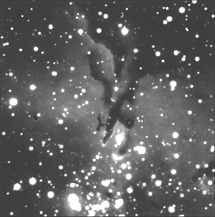 |
 |
SBIG, The Pioneering CCD Company
In most high technology markets there are "pioneers", companies who have the technology and dedication to influence the direction of an entire industry. In the past 10 years SBIG has been that pioneer in the electronic imaging industry. We have a reputation for outstanding quality products. We were the first company to introduce CCD autoguiding with the Model ST-4, Track and Accumulate (TRACCUM) with the Model ST-6, and dual CCD self-guiding with the Models ST-7 and ST-8. SBIG pioneered tricolor imaging with both hardware and software and are pushing the technology forward again with the introduction of Adaptive Optics and a stand-alone video camera and autoguider. Along the way we were granted two U.S. Patents, one for Track and Accumulate and the other for Self-Guiding.
Of more significance to customers reading this catalog for the first time is that we have brought back to life the long forgotten practice of offering quality "technical support". SBIG's company philosophy, as published in our ads is based on ".. .basic values, good products, strong technical support and honesty". We can help you take photographic quality CCD images, measure the surface brightness of a spiral galaxy, image a comet, or obtain high resolution densitometry images of x-ray plates. We can help you obtain long, uninterrupted autoguided astrophotographs. As stated in our ads, "We understand how our products work and we want you to consider us a part of your technical staff". If you want to deal with a company that understands CCD imaging and will take the time to help you, contact SBIG.
 |
M16 Nebulous Star Cluster.
300 |
The introduction of Charge-Coupled Devices (CCDs) has dramatically changed the methods astronomers use to view objects. The remarkable sensitivity and dynamic range of CCDs has made them the detector of choice. A CCD is an array of photosites (pixels) on a silicon substrate. The pixels are arranged in rows and columns. Light falling on the CCD is recorded as an electrical signal by converting the photons to electrons. The sensitivity of a CCD is ten times faster than the fastest films and is linear in response (which films are not). The number of photons converted to electrons, referred to as Quantum Efficiency, is in the order of 50%. These advantages as well as the digital nature of the data make CCD devices ideal for astronomical imaging.
Cover photo: Comet Hale-Bopp taken with Pentax 6 x 7 camera, 300 mm f/4 lens, piggyback on a Celestron C-8 equipped with ST-4 autoguider. Michael Barber / SBIG
Revised: July 06, 2000 10:02:03 AM.
Copyright © 1998 Santa Barbara Instrument Group, Inc. All rights reserved.
Please report any problems with this page directly to the Webmaster